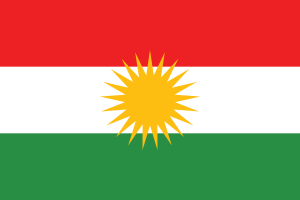Language/Northern-kurdish/Culture/Folklore
As a Northern Kurdish language teacher of 20 years, I believe it is important to not only teach the vocabulary and grammar of the language, but also explore the rich culture and traditions of the Northern Kurdish people. In this lesson, we will delve into the folklore of Northern Kurdistan.
Types of Folklore
Folklore is the traditional beliefs, customs, stories, and sayings of a community, passed through the generations by word of mouth. Northern Kurdish folklore can be divided into several categories:
Myths and Legends
Northern Kurdish mythology has a rich history, with many gods and goddesses that were believed to control the natural world. There are also many legends that have been passed down through the generations, such as the story of Seydo and Helo, the Kurdish Romeo and Juliet.
Fairy Tales
Fairy tales are also a part of Northern Kurdish folklore, with many stories being passed down from generation to generation. These stories often have strong moral messages and are intended to teach young people about right and wrong, bravery, and kindness.
Folk Songs and Music
Music is an important part of Northern Kurdish folklore, with many traditional instruments like the saz and the daf being used to create beautiful music. Folk songs often tell stories about love, nature, or daily life and are sung by Northern Kurdish people during celebrations or at gatherings.
Proverbs and Sayings
Proverbs and sayings are a part of Northern Kurdish folklore that has been used to pass on wisdom and cultural values through the generations. These often include humor and are used in daily life.
Famous Northern Kurdish Folk Figures
Throughout history, many Northern Kurdish people have become famous for their contributions to Northern Kurdish folklore, literature, and music. Some of these figures include:
- Ahmet Arif: A famous Northern Kurdish poet and writer known for his work in both Turkish and Northern Kurdish.
- Piremerd: A Kurdish poet and writer known for his contributions to Kurdish literature and culture.
- Seydo and Helo: The Northern Kurdish Romeo and Juliet who are still celebrated in music and storytelling today.
Vocabulary
Here are some common words and phrases related to Northern Kurdish folklore:
| Northern Kurdish | Pronunciation | English |
|---|---|---|
| Serewala xerîb | /seɾeːwala xeɾiːb/ | Stranger's leader |
| Kurd û kurdik | /kuɾd u kuɾdik/ | A Kurdish way of saying "boy and girl" |
| Welemerdana | /welemeɾdana/ | King of the fairies |
| Xanişîn | /xaniʃiːn/ | Witch doctor |
| Destana | /destana/ | A form of Northern Kurdish oral story telling |
I hope this lesson has given you a better understanding of Northern Kurdish folklore and its significance to Northern Kurdish culture. Remember to keep exploring the rich history and customs of the Northern Kurdish people as you continue your language learning journey.

